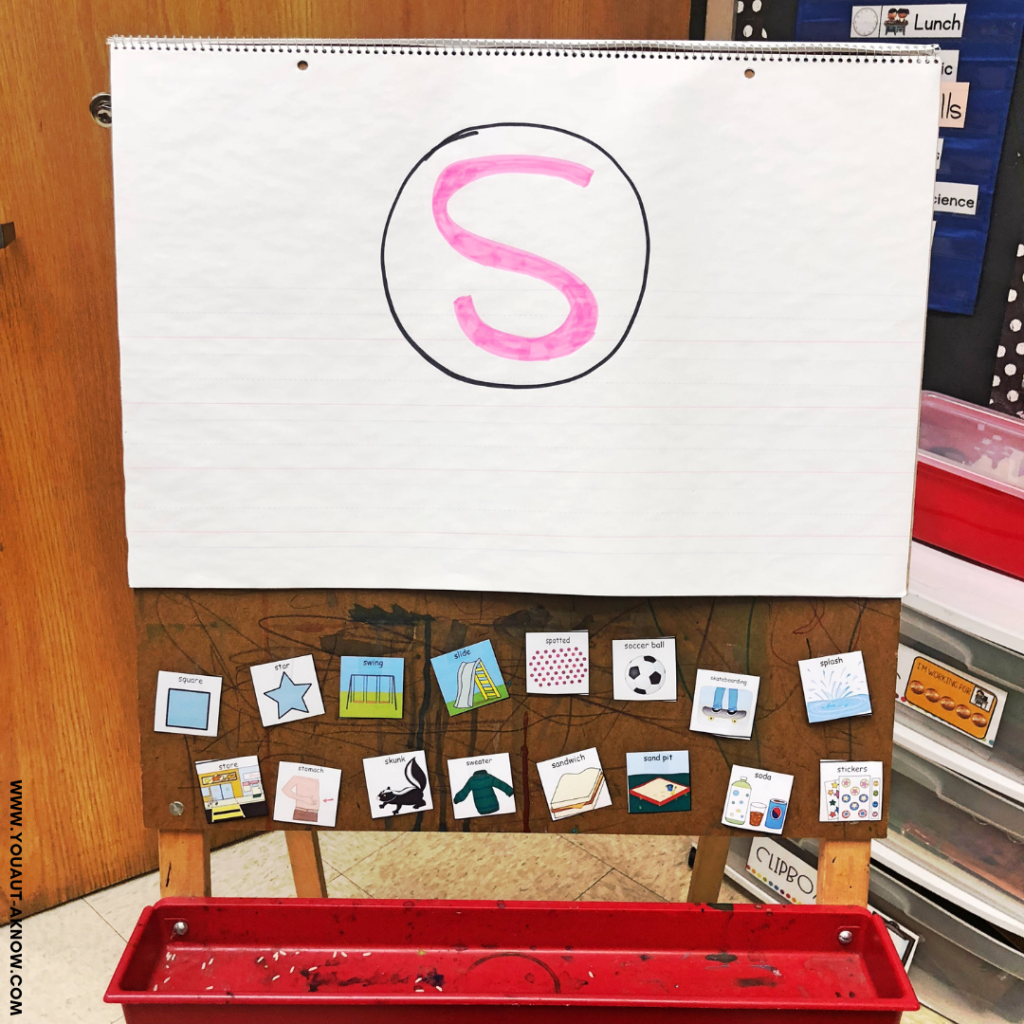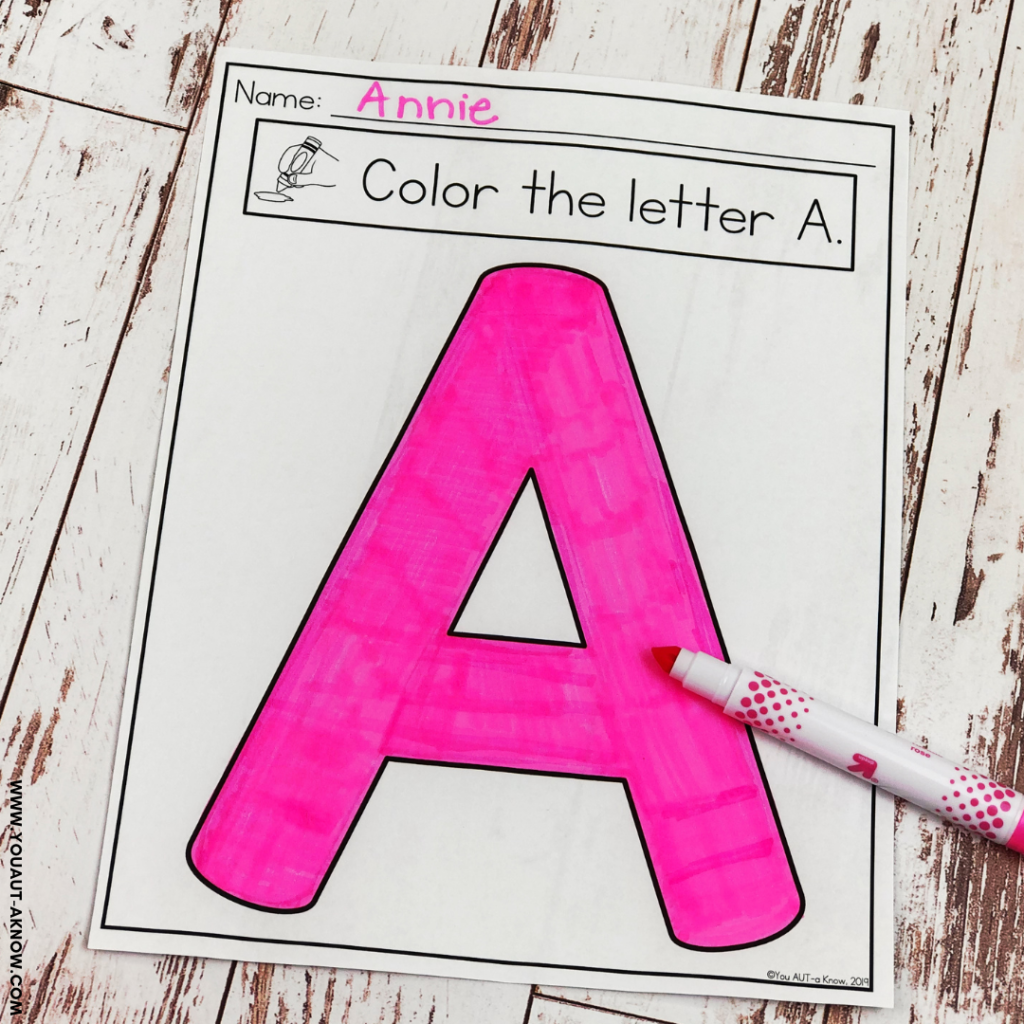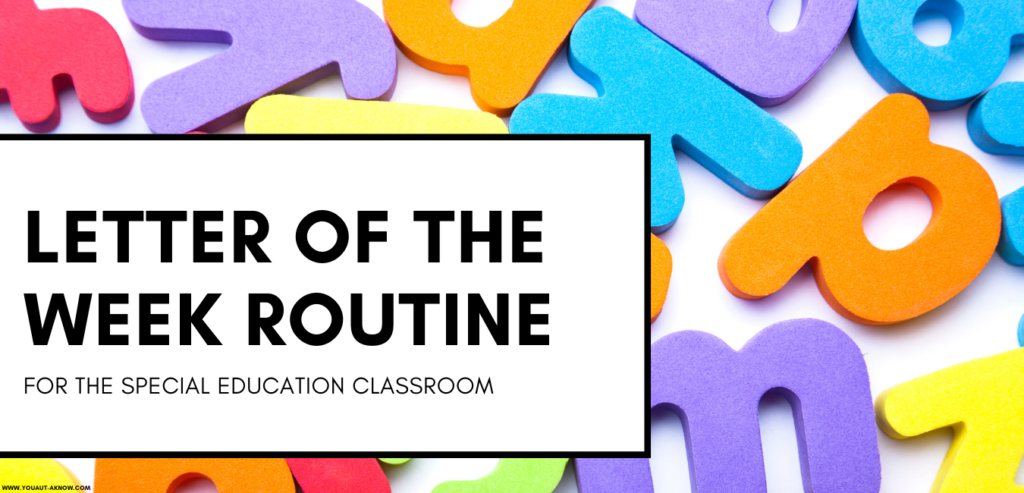
I’ve been using a letter of the week routine in my K/1 Special Education classroom for years! Many of my students are learning letter names and sounds, so setting up a letter of the week routine has been a great way to learn new letters while using the same, familiar routines we’re used to. When I set up our letter of the week routine, I liked to plan activities for each day of the week that we repeat every week. This builds familiarity with our classroom routines, so we can focus on learning the new letters and sounds as opposed to learning the new routine. I also use a variety of whole group, small group, and independent activities so we can get a lot of practice with our letters.
I’m going to provide an overview of the different activities we do in our classroom for each day of the week.

Monday Letter of the Week Routine
Whole Group
On Monday, I always create an anchor chart during our whole group time. This is usually our morning meeting time in our classroom. I either prepare a piece of chart paper or project my letter of the week chart on our board. I prep the picture cards and have students help me place the pictures on our anchor chart. These pictures are words that begin with the sound so students can start hearing the initial sound and connect our letter of the week to words. When I prepare this activity, sometimes I only use pictures that start with our target letter to make it an errorless activity. Other times I will mix in words with different sounds. This depends on where my students are in their understanding of letters and initial sounds.
I also explain today that students will be taking home a show and tell assignment to complete this week. On Friday, they will bring an item from their home that has our target letter on it or begins with our target letter.
Small Group

On Monday’s during small group time, students will complete a letter of the week mini book. I have a variety of levels that I prepare based on the ability of students in the group. This continues to provide students with exposure to the letter in the initial sound of words.
We also begin working in our workbook on Monday. We typically do a page from the workbook each day during small group times. After finishing our workbook time, I introduce students to our letter of the week clip cards or file folders. This allows them to get practice with them and when they’re using them independently, we can move them to their work stations.

Tuesday Letter of the Week Routine
Whole Group
To kick off our routine on Tuesday, we start by reviewing our anchor chart. We name the pictures we have already added. Sometimes I’ll ask students to come point to specific words if they are words they’re learning to identify in our classroom. Then we’ll see if we have any words to add to our anchor chart. Of course I keep a few images prepared, but if students come up with more words, we draw a quick picture on our anchor chart.
After we finish reviewing our anchor chart, we complete our letter of the week coloring page. This gives us time to talk about the letter, name it, and practice the sound it makes. We can also work on other communication skills like requesting and commenting during this quick activity.
Small Group
On Tuesday, our small group time really imitates what we did the day before. Here’s what students will do during small group time today:
- Review little book. Students read the book they assembled on Monday along with the teacher.
- Continue working in workbook. Students will complete another page in their letter of the week workbook today.
- Practice with clip cards and file folders. During this time, students practice their independent working skills. We’re usually able to start moving some of our tasks to work stations after today.
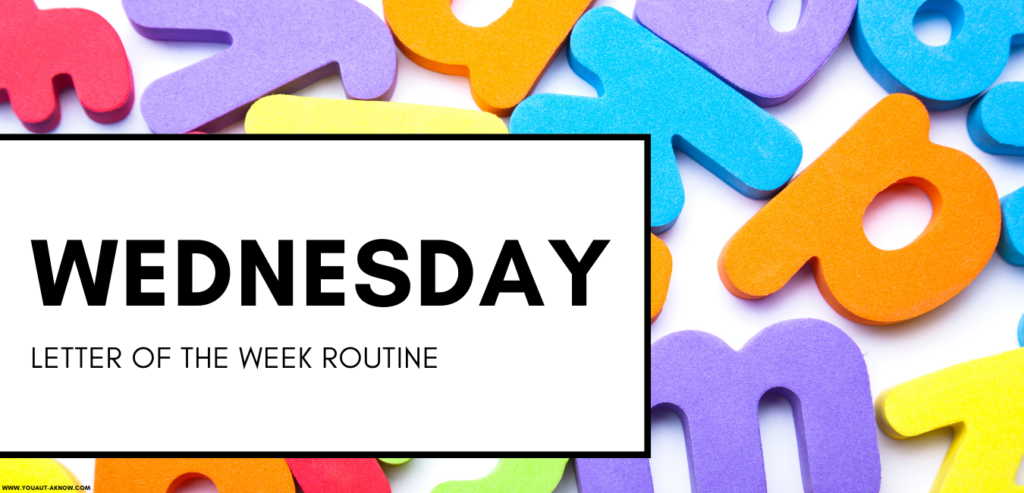
Wednesday Letter of the Week Routine
Whole Group
Wednesday whole group letter of the week activities kick off with another review of our anchor chart. We add words to it as needed. This usually goes pretty quickly by Wednesday, so I’ll pull up some letter songs and let the students choose one to listen to. I’ll share the videos for the letter A here, but each creator has videos for every letter of the alphabet. We just update our choices each week. Here are a few of my favorites:
Small Group
By now, we’re into the swing of our letter of the week routine and we’re really not making a lot of changes during our small group time. The only difference is that by now, some of my students have moved their file folders and clip cards to work stations, so we introduce a new activity for practice. Here’s what we’re up to on Wednesday:
- Review little book. Students read the book they assembled on Monday along with the teacher. Depending on the group, I may have them start to practice reading to self during their repeated read of their book.
- Continue working in workbook. Students will complete another page in their letter of the week workbook today.
- Sort to identify target letters. I will print out a sorting mat and letters for students. Depending on the student, they may cut out the sorting cards or we may precut them. Students will sort to tell if the card is the target letter/initial sound or not.

Thursday Letter of the Week Routine
Whole Group
Thursday is really about firming up our understanding of the letter of the week we’ve been studying. We always start our whole group time by reviewing our anchor chart. Given that we have images posted on our anchor chart, I start to ask questions like “Does X start with (letter)?” and help students reference our chart to see if that image is on our chart.
We love to wrap up our whole group activity time by listening to one of our songs.
Small Group
Small group time functions with the same routine we’ve been working on all week. By now students are getting pretty independent at the routine. Here’s the activities we usually complete during small group on Thursday:
- Review little book. Students read the book they assembled on Monday along with the teacher. By now, I’m really trying to get all of my students to read their books themselves while I listen in when possible.
- Continue working in workbook. Students will complete another page in their letter of the week workbook today. We’re usually wrapping up our work in our workbook on Thursday so we can do a fun activity on Friday.
- Sort to identify target letters. On Thursday, we revisit our letter sorting mats. During our second time sorting the letters, we will usually glue them down to our sorting mat.

Friday Letter of the Week Routine
Whole Group
Today is our last day with our letter of the week. It’s time for a huge letter celebration! We usually start by reviewing our anchor chart and adding to it as needed. Then it’s time for show and tell! On Monday, students were asked to look around their home to find something that has our target letter on it or starts with our target letter. This is when students can share what they brought to school. If it’s not on our anchor chart yet, we can add it!
Small Group
By now, we have our small group work routine down! Students engage in the activities as follows:
- Review little book. Students read the book they assembled on Monday along with the teacher. When we finish our final read of the book, we place it in student book bags so they can read them during “read to self” times in our guided reading activities.
- Continue working in workbook. If there is anything to finish in our workbook, we finish it up today.
- Create a letter crown. Today is all about celebrating what we’ve learned. I prepare a letter of the week crown for students to complete. Based on the skills they’re working to learn (letter identification or beginning sounds), they receive a crown and pictures to cut out and add to their crown to show what they have learned this week.
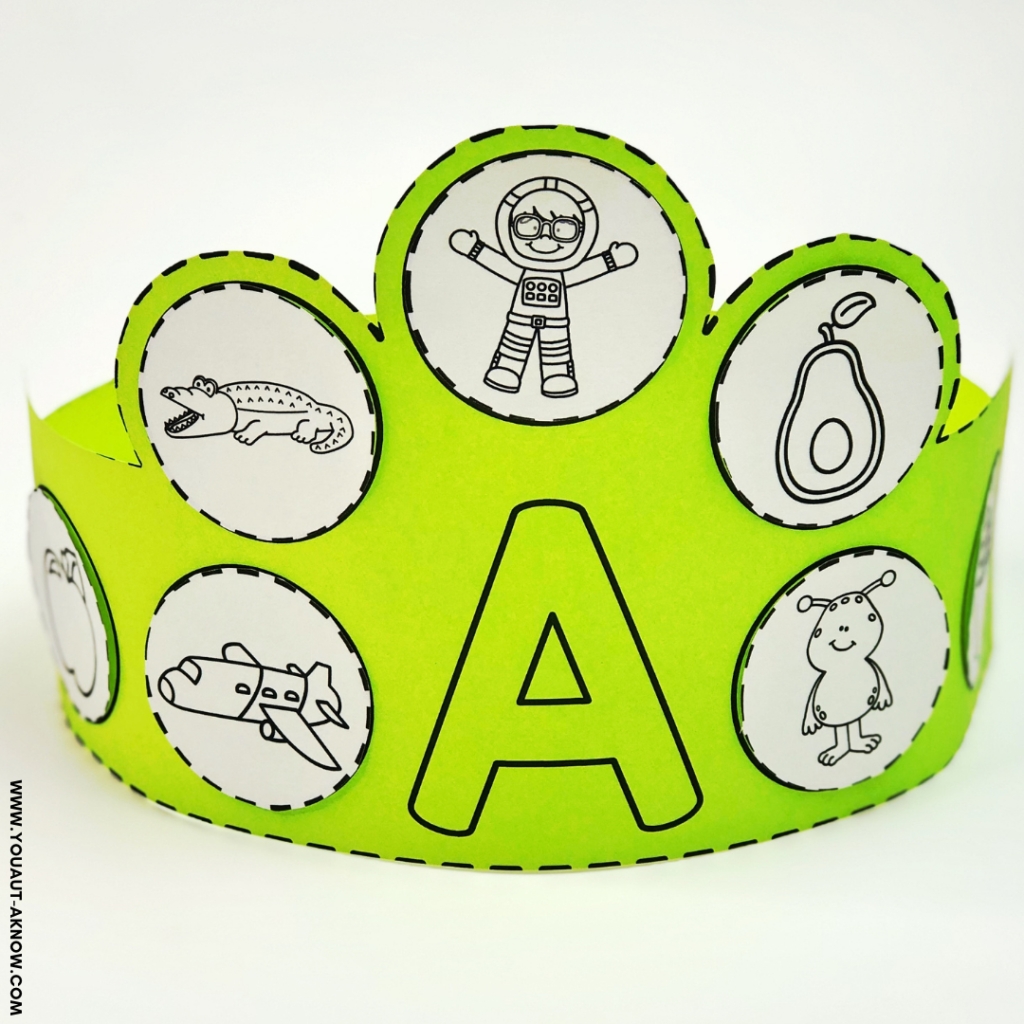
Our classroom thrives on familiar routines. Building familiar routines really helps us target the instruction. Once we’ve taught and perfected the routine in our classroom, we’re better able to attend to the academic skills. If you’re ready to dive into a letter of the week routine, I’ve put together everything I use in my classroom. It’s a great way to build a routine that targets letter identification and initial sounds in words.
